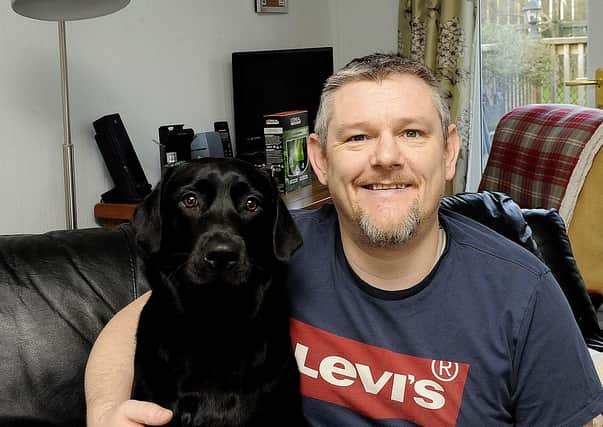Tourette’s cure may just be on the horizon


Tourette’s makes sufferers involuntarily “tic” in a variety of ways, whether it be physical or oral, often manifesting in swearing or inappropriate outbursts, known as coprolalia.
John Davidson, who was awarded an MBE in 2019 for his ongoing work in helping others with Tourettes, said he was keen to try out the wristwatch-style device which sends pulses to the wrist to help reduce tics.
Advertisement
Hide AdAdvertisement
Hide AdThe 49-year-old, who burst to fame in a series of BBC documentaries, starting with the QED programme John’s Not Mad in 1989, told us: “This device sounds very interesting indeed.


“A relief from muscle strains, body fatigue and restlessness would be a welcome gift most ticcers haven’t felt for a very long time.”
The device, which is going through tests at the University of Nottingham, has reportedly led to some amazing results for those trying it out.
The tics displayed by Tourette’s sufferers are caused by changes in chemical signals in the brain and often come after a strong urge-to-tic, known as a premonitory urge.
Advertisement
Hide AdAdvertisement
Hide AdIn the new study, scientists used the device to send repetitive trains of stimulation to the median nerve at the wrist to increase the strength of electrical brain activity, which was found to substantially reduce the frequency and intensity of tics and the urge to tic.
Tests were carried out on 19 people with Tourettes.
The findings were published yesterday on the Current Biology journal, and reported on by the Metro newspaper.
One 21-year-old participant said: “I’ve tried a lot of different medications, therapies, relaxation techniques, support groups and diet changes to try to relieve my Tourette’s.
‘The whole experiment was very surreal. When the electrical pulse on the wrist started to increase, the tic urges decreased, which was a completely shocking experience for me. I was silent and still. For a further three sessions I noticed the same result, also the stimulation did decrease my tics at home.
Advertisement
Hide AdAdvertisement
Hide Ad“At the first session of the stimulation, I felt as if finally, a new treatment may have been found to free myself from my Tourette’s and wanted to cry with happiness.”
The study’s lead author Barbara Morera Maiquez, from the University of Nottingham, said: “The results of this study were quite remarkable, especially in those people with the most severe tics, and showed that this type of stimulation has real potential as a treatment aid for Tourette’s.”
And now John is keen to offer his services as part of the ongoing tests.
He told The Southern: “It’s something that’s just appeared in the public domain so I’ve not had much time to look into it but will be looking for more info.
Advertisement
Hide AdAdvertisement
Hide Ad“If there was an opportunity to test this device then I’d be right up there at the front of the line as I’m sure many other ticcers will be too.
“I’m not sure how long this study and trial have been going so I’m going to try and get hold of a copy of the papers on this trial.
“It’s very exciting news for people with Tourette’s and could potentially reduce the symptoms of the condition markedly so that life would be much more manageable.
“It could mean for me that I tic less and get a bit more control over the condition especially the premonitory urges that occur just before a tic or outburst.
Advertisement
Hide AdAdvertisement
Hide Ad“I hope this could be a huge leap forward for people living with the condition and would give us an opportunity to be part of areas of life that otherwise are very difficult due to the socially-debilitating aspect of the condition.”